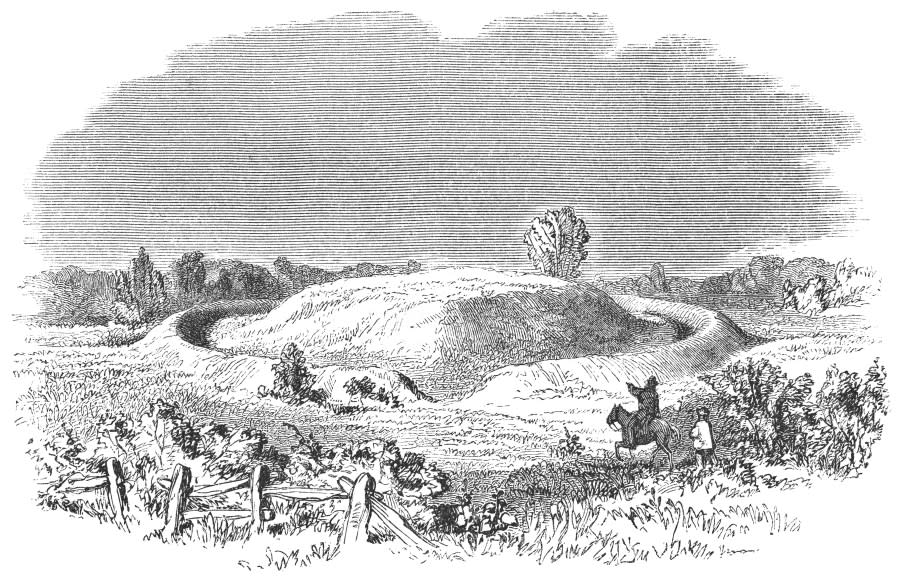Mountain State Destinations: Grave Creek Mound

MOUNDSVILLE, WV (WVNS) — Not all destinations in West Virginia lie above the surface.
So what interesting secrets are hiding beneath the ground?
Moundsville, West Virginia is home to a piece of centuries old history. According to the West Virginia Encyclopedia, standing at 62 feet tall and 240 feet in diameter, the Grave Creek Mound is the largest cone-shaped mound in North America.
Mountain State Destinations: Green Bank Observatory
Archaeologists estimate that the Grave Creek Mound is an Adena burial mound that was built around the third century B.C., also known as the Early Woodland period (1000-200 B.C.), and that the mound contains around 57,000 tons of dirt that would have taken three million basket-loads of dirt to create.
While the mound may have been created centuries ago, the first detailed description of it is thought to have been written in 1775 by Nicholas Cresswell. It was not until 1838 that excavations of the mound revealed more hidden secrets. Abelard Tomlinson and his brother-in-law dug into the mound and discovered two burial tombs.

Numerous items were found in the burial chambers, including bone and shell beads, copper bracelets, and more. However, these were not the only items found inside the Grave Creek Mound. A small sandstone tablet, named the Grave Creek Tablet, was discovered in the mound.
The Grave Creek Tablet might be the most controversial archaeological relic found in the state. According to the West Virginia Encyclopedia, the tablet measures around one and a half by two inches. It was also covered in inscriptions originally thought to be Norse writings or runes, and was found during Tomlinson’s excavation in 1838, which was the first archaeological excavation in West Virginia. After Henry Rowe Schoolcraft examined the tablet, he thought the inscriptions were made by Celts from Britain or Spain instead of early Native Americans.
Details about its discovery and validity vary, however it is agreed that the tablet was found in the upper burial vault. The controversy surrounding the tablet mainly comes from the debates around the engravings, as it was inferred that they look like many ancient alphabets such as ancient Greek, Phoenician, Egyptian, Tunisian, Etruscan, Libya, the African interior, and Algiers.
Despite years of study the tablet’s origin was never determined, and while the tablet’s location is unknown, four casts of it exists at the Smithsonian Institution.
The Grave Creek Mound was purchased by the State in 1909 where it was put under the watch of the prison warden of the neighboring state prison. The opening of the original Mound Museum in 1952 was mainly due to the West Virginia Archaeological Society and Delf Norona.
The location became a national historic landmark in 1966, and the Grave Creek Mound State Park in 1967, and later became a West Virginia Division of Culture and History historic site.
Mountain State Destinations: The Greenbrier Resort
Delf Norona was an amateur archaeologist whose major contributions were a result of his interest in the Grave Creek Mound, history, and archaeology. He was a part of creating the West Virginia Archaeological Society in 1949, as well as the construction and development of the Mound Museum in 1952 where he was the curator until his death. In addition to being a part of creating the West Virginia Archaeological Society, he was also the president. The Delf Norona Museum by the Grave Creek Mound was named in his honor.
Excavations done in the mid-1970s by the West Virginia Geological and Economic Survey revealed a moat surrounded the mound that once measured 910 feet long, 40 feet wide, and four to five feet deep., with a minimum of one passageway going over the moat to the opposite side of the mound.
The Grave Creek Mound is an interesting chapter of the Mountain State’s story, and the Grave Creek Mound Archaeological Complex would be a great place to visit for anyone interested in learning more about this part of West Virginia history.
For the latest news, weather, sports, and streaming video, head to WVNS.

